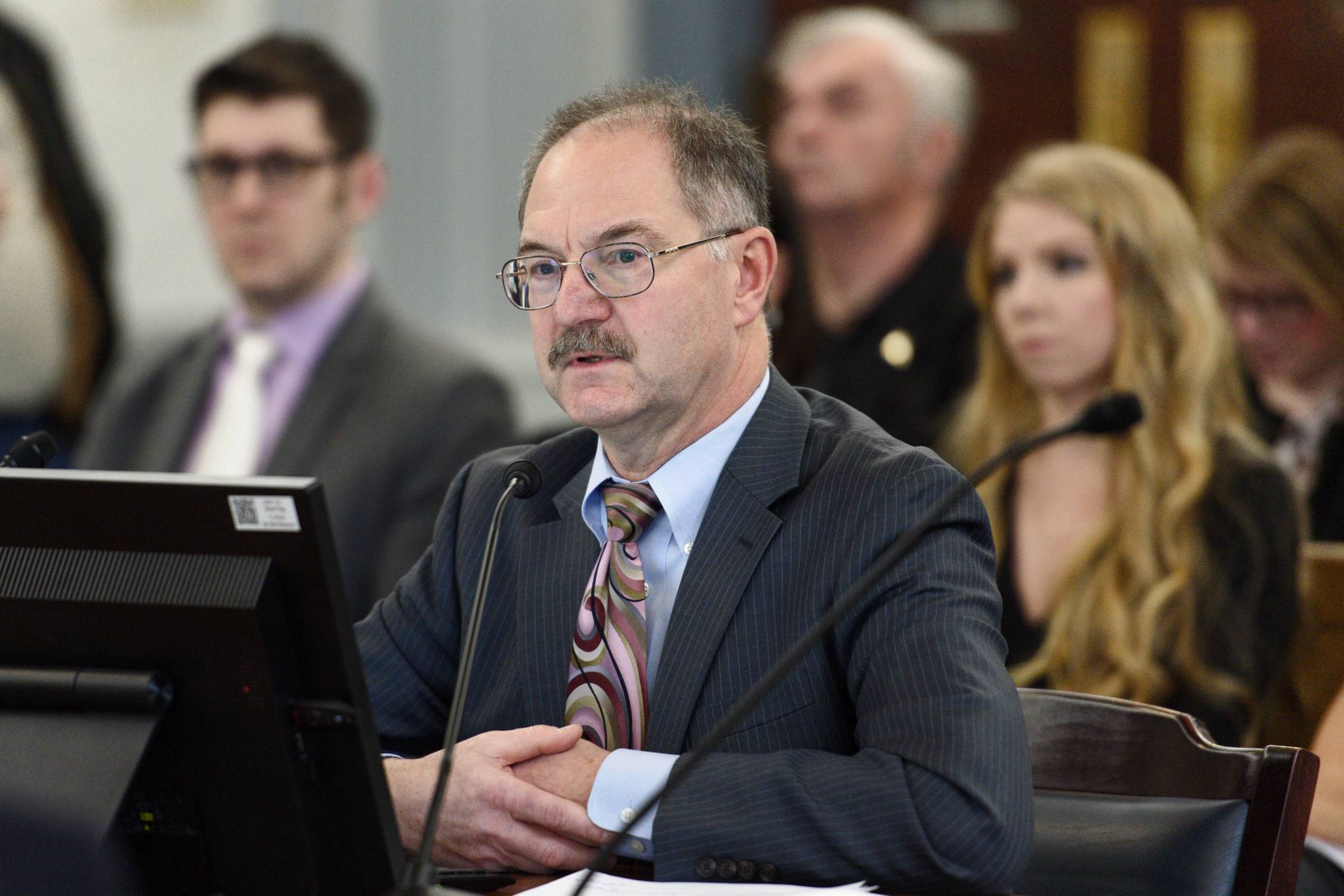Two budget officials offered differing views on the state’s fiscal situation Wednesday morning, giving senators a look into the governor’s budget process while also providing them a reminder of how serious the state’s budget deficit is.
During her presentation to the Senate Finance Committee on Wednesday, Office of Management and Budget Director Donna Arduin said the governor’s amended budget will be released Feb. 13. The governor has 30 days from the start of legislative session to release a budget plan, and Feb. 13 is the 30th day of session.
Arduin didn’t offer specifics about the budget, which is still in progress, and repeatedly said to expect full information when the budget is unveiled Feb. 13. Dunleavy’s initial budget included a $1.6 billion deficit, in large part to allow for larger Permanent Fund Dividends.
Arduin says that one of the guiding principles for putting the budget together is asking departments to “do less with less” instead of asking them to do more with less money. She said her office is currently identifying each department’s core mission and figuring out if that department’s expenditures match up with that mission.
“Rather than asking agencies to do more with less, we’re asking them to do less with less in many instances,” Arduin said.
[Gov’s crime message resonates, but Juneau lawmakers hesitant about constitutional amendments]
After Arduin’s presentation, Legislative Finance Division Director David Teal spoke frankly and directly to the committee members. Teal painted the budget situation in a much more dire light than Arduin did.
Teal said the state of Alaska’s finances has been masked by savings accounts, making the deficit seem smaller than it is because the state continues to dip into savings to balance the budget.
“Larger deficits mean larger unplanned draws (from savings) from next year to fill those,” Teal said. “This is a death spiral.”
Arduin has extensive experience working with Republican governors to cut budgets. She said she’s worked with seven governors in six states on state budgets over the course of “a few decades.”
Sen. Bill Wielechowski, D-Anchorage, said during the meeting that he was skeptical of having Arduin come in for a few months to do the budget and then leave.
“We have commissioners who are selected by the governor and approved by the Legislature. You are not approved by the Legislature,” Wielechowski said. “You’ve been in Alaska for what, six weeks? I know you’re planning on leaving Alaska in the next few months after we’re done here. I guess I’m concerned about so much power focused and budget-creating ability placed in your hands.”
Arduin responded by saying that she reports to Dunleavy, and that all decisions go through him.
Teal’s presentation differed from Arduin’s in a number of other ways. Arduin showed a graph indicating that Alaska’s spending per person is one of the highest in the nation. Teal said he believes it’s more practical to compare the state’s spending not to other states (which all face different challenges), but to previous years in Alaska. A graph of his showed that Alaska’s current spending per person is one of the lowest totals since 1976.
Arduin talked about simplifying the budget process. During Tuesday night’s State of the State address, Dunleavy also said he wants to have a budget that the average person can comprehend. Teal urged members of the Senate Finance Committee to not gloss over details as they figure out where to cut and where they can collect revenue.
“I’m all for simplification if the simplification helps you make decisions,” Teal says. “But your decisions will be a lot easier to make, and better, if you understand your fund sources.”
Teal made clear that he wasn’t making any recommendations to the committee, but was merely providing them with information and his interpretation of Alaska’s fiscal state.
The bulk of the Legislature’s task is balancing the budget, and based on Wednesday’s presentation, it sounded like that process won’t begin in earnest until Feb. 13. When that budget is released, Teal said, legislators will have tough decisions to make.
“I hope you have a short and productive session,” Teal said, as those on hand chuckled.
• Contact reporter Alex McCarthy at 523-2271 or amccarthy@juneauempire.com. Follow him on Twitter at @akmccarthy.

